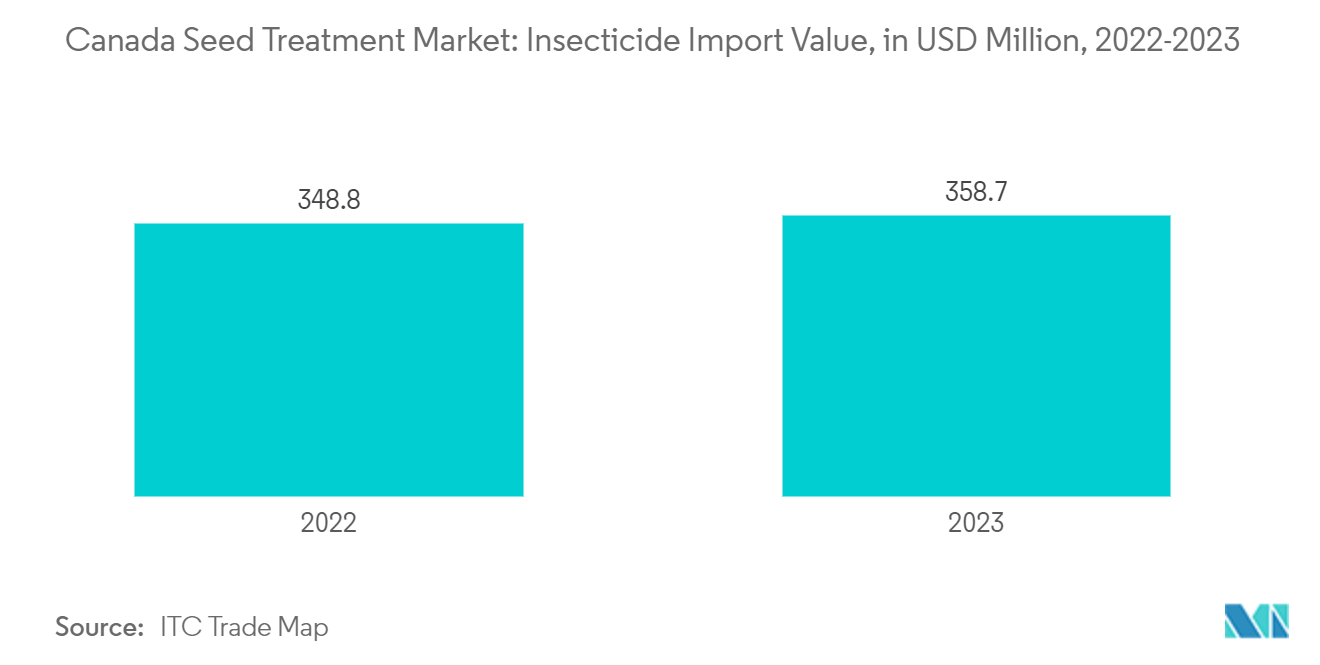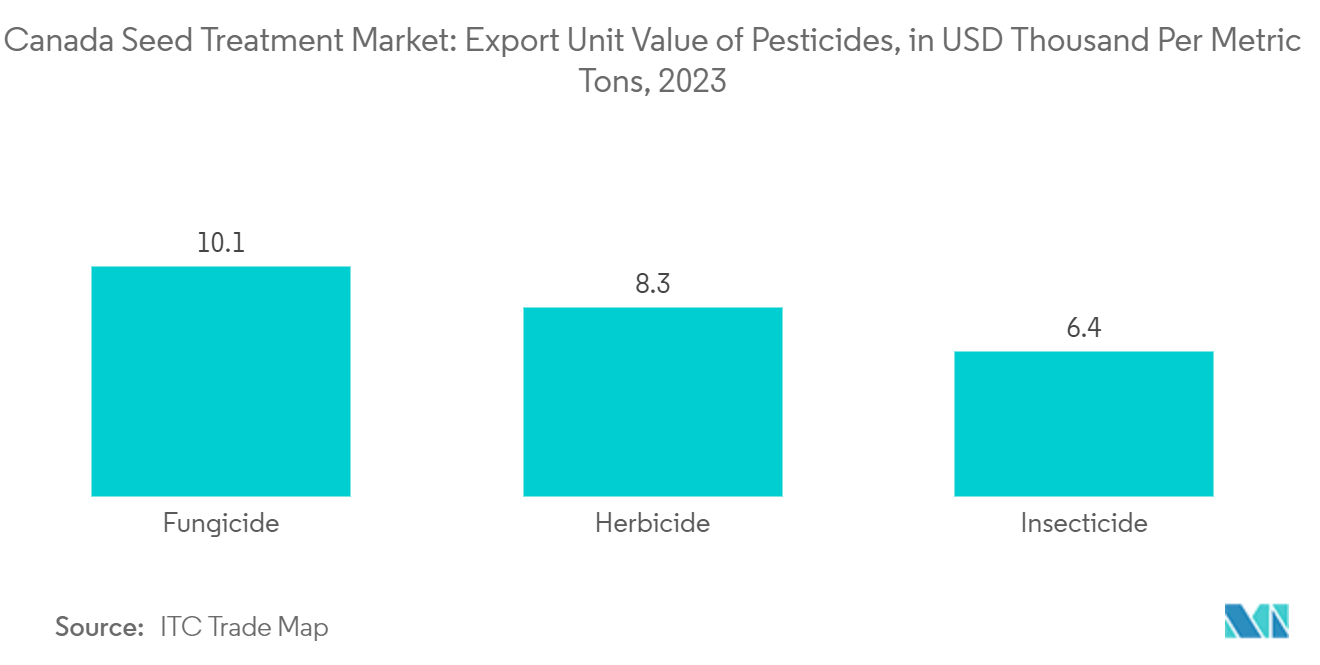Market Trends of Canada Seed Treatment Industry
Increasing Pesticide Usage per Hectare
The increasing use of pesticides per acre in Canada has significantly propelled the growth of the seed treatment market. Farmers are intensifying pesticide use to protect crops from an expanding range of pests and diseases. However, direct field application of pesticides often results in inefficiencies, including uneven distribution, runoff, and heightened environmental risks. Seed treatment offers a targeted and efficient alternative, allowing protective agents to be applied directly to seeds, minimizing waste while enhancing crop protection. According to the Pest Management Regulatory Agency (PMRA) of Canada, total pesticide sales in the country reached 139,744,726 kg of active ingredient in 2022, representing a 4.9% increase from the previous year.
According to the ITC Trade Map, Canada ranks as the third-largest importer of pesticides globally. Canada's share of global pesticide imports increased from 4.5% in 2022 to 4.7% in 2023, according to the ITC Trade Map. This growing reliance on pesticides reflects the escalating challenges posed by resistant pests and evolving plant pathogens in Canadian agriculture. By incorporating seed treatment into their practices, farmers can proactively protect crops during their most vulnerable early growth stages. This approach optimizes pesticide use, requiring lower dosages later in the crop cycle. Consequently, seed treatments are viewed as a sustainable complement to traditional pesticide usage, aligning with the agricultural sector's need to balance productivity and environmental responsibility.
Furthermore, government and industry initiatives promoting responsible pesticide use and environmental stewardship have indirectly increased the demand for seed treatments. By reducing the overall pesticide load in agricultural ecosystems, seed treatments contribute to sustainable farming practices while maintaining crop yields. In 2023, the PMRA registered a new seed treatment nematicide ingredient called cis-JASMONE, demonstrating ongoing innovation in the field. The increasing use of pesticides per acre in Canada is driving the adoption of seed treatment solutions as a more precise, efficient, and environmentally friendly alternative. As farmers seek to enhance crop protection while reducing costs and environmental impacts, the seed treatment market is anticipated to grow during the forecast period, supported by advancements in formulation and application technologies.

Fungicides Dominates the Market
Fungicides are the primary component in the Canadian seed treatment market due to their efficacy against various seed- and soil-borne fungal diseases. Canada's agriculture heavily relies on crops like wheat, canola, corn, and soybeans, which are susceptible to fungal infections such as Fusarium root rot, Pythium damping-off, and Rhizoctonia diseases. These infections can result in poor germination, stunted growth, and significant yield reductions. In October 2024, an alert was issued for Tar Spot, a disease caused by the fungus Phyllachora maydis, in Quebec's commercial corn fields. Consequently, fungicidal seed treatments have become essential in crop protection strategies for Canadian farmers.
The extensive use of fungicides in seed treatment is also due to their preventive action. Fungicidal seed treatments protect crops during their most vulnerable early growth stages, ensuring healthy germination and root development. This targeted application directly onto seeds reduces the volume of active ingredients required and minimizes environmental exposure. This efficiency has made fungicidal treatments a preferred option for farmers aiming to protect crops while adhering to sustainability practices.
Furthermore, higher export unit values for fungicides have also contributed to the dominance of the fungicide segment. In 2023, the export value of fungicides was USD 10.1 thousand per metric tons, compared to USD 8.3 thousand per metric tons for herbicides and USD 6.4 thousand per metric tons for insecticides. Fungicides dominate the Canadian seed treatment market due to their crucial role in protecting crops from serious fungal diseases at early stages and their significant contribution to export value. As Canada's agricultural sector continues to prioritize quality, sustainability, and market competitiveness, the fungicide segment is anticipated to grow during the forecast period.


